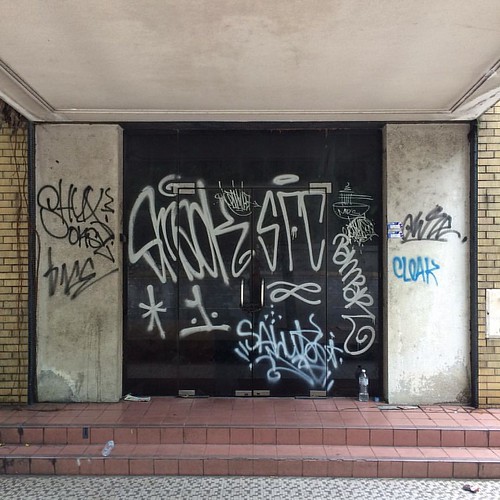eceptor beta-arrestin 2 interaction: a high-affinity receptor phenotype. Mol Endocrinol 19: 81223. 39. Wang Y, Perfetti R, Greig NH, Holloway HW, DeOre KA, et al. Glucagon-like peptide-1 can reverse the age-related decline in glucose tolerance in rats. J Clin Invest 99: 2883889. 40. Baggio LL, Kim JG, Drucker DJ Chronic exposure to GLP-1R agonists promotes homologous GLP-1 receptor desensitization in vitro but does not attenuate GLP-1R-dependent glucose homeostasis in vivo. Diabetes 53 Suppl 3: S2054.: S205-S214. 41. Zander M, Madsbad S, Madsen JL, Holst JJ Effect of 6-week course of glucagon-like peptide 1 on glycaemic control, insulin sensitivity, and beta-cell function in type 2 diabetes: a parallel-group study. Lancet 359: 82430. 42. Larsen J, Hylleberg B, Ng K, Damsbo P Glucagon-like peptide-1 infusion must be maintained for 24 h/day to obtain acceptable 16985061 glycemia in type 2 diabetic patients who are poorly controlled on sulphonylurea treatment. Diabetes Care 24: 1416421. 43. Yu SS, Lefkowitz RJ, Hausdorff WP Beta-adrenergic receptor sequestration. A potential mechanism of receptor resensitization. J Biol Chem 268: 33741. 44. Pippig S, Andexinger S, Lohse MJ Sequestration and recycling of beta 2-adrenergic receptors permit receptor resensitization. Mol Pharmacol 47: 66676. 45. Widmann C, Dolci W, Thorens B Internalization and homologous desensitization of the GLP-1 receptor depend on phosphorylation of the receptor carboxyl tail at the same three sites. Mol Endocrinol 11: 1094102. 46. Barak 17460038 LS, Tiberi M, Freedman NJ, Kwatra MM, Lefkowitz RJ, et al. A highly conserved tyrosine residue in G protein-coupled receptors is required for agonist-mediated beta 2-adrenergic receptor sequestration. J Biol Chem 269: 2790795. 9 September 2010 | Volume 5 | Issue 9 | e12734 Constitutive Activation of the Midgut Response to Bacillus thuringiensis in Bt-Resistant Spodoptera exigua Patricia Hernandez-Martinez1, Gloria Navarro-Cerrillo1, Silvia Caccia1, Ruud A. de Maagd2, William J. Moar3 Juan Ferre1, Baltasar Escriche1, Salvador Herrero1 `ncia, Burjassot, Spain, 2 Plant Research International B.V., Wageningen University and Research Centre, Wageningen, The 1 Department of Genetics, Universitat de Vale Netherlands, 3 Department of Entomology and Plant Pathology, Auburn University, Auburn, Alabama, United States of America Abstract Bacillus thuringiensis is the most effective microbial control agent for controlling numerous species from different insect orders. The main  threat for the long term use of B. thuringiensis in pest control is the ability of insects to develop resistance. Thus, the identification of insect genes involved in conferring MedChemExpress 718630-59-2 resistance is of paramount importance. A colony of Spodoptera exigua was selected for 15 years in the laboratory for resistance to XentariTM, a B. thuringiensis-based insecticide, reaching a final resistance level of greater than 1,000-fold. Around 600 midgut ESTs were analyzed by DNA-macroarray in order to find differences in midgut gene expression between susceptible and resistant insects. Among the differentially expressed genes, repat and arylphorin were identified and their increased expression was correlated with B. thuringiensis resistance. We also found overlap among genes that were constitutively over-expressed in resistant insects with genes that were up-regulated in susceptible insects after exposure to XentariTM, suggesting a permanent activation of the response to XentariTM in resistant insects. Incr
threat for the long term use of B. thuringiensis in pest control is the ability of insects to develop resistance. Thus, the identification of insect genes involved in conferring MedChemExpress 718630-59-2 resistance is of paramount importance. A colony of Spodoptera exigua was selected for 15 years in the laboratory for resistance to XentariTM, a B. thuringiensis-based insecticide, reaching a final resistance level of greater than 1,000-fold. Around 600 midgut ESTs were analyzed by DNA-macroarray in order to find differences in midgut gene expression between susceptible and resistant insects. Among the differentially expressed genes, repat and arylphorin were identified and their increased expression was correlated with B. thuringiensis resistance. We also found overlap among genes that were constitutively over-expressed in resistant insects with genes that were up-regulated in susceptible insects after exposure to XentariTM, suggesting a permanent activation of the response to XentariTM in resistant insects. Incr
